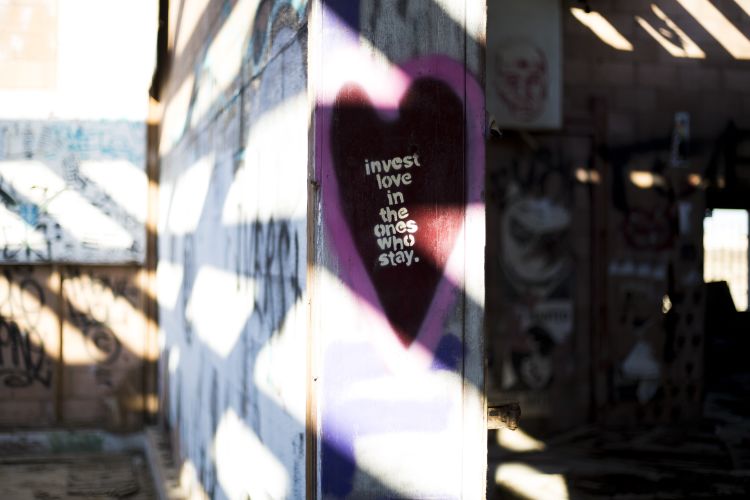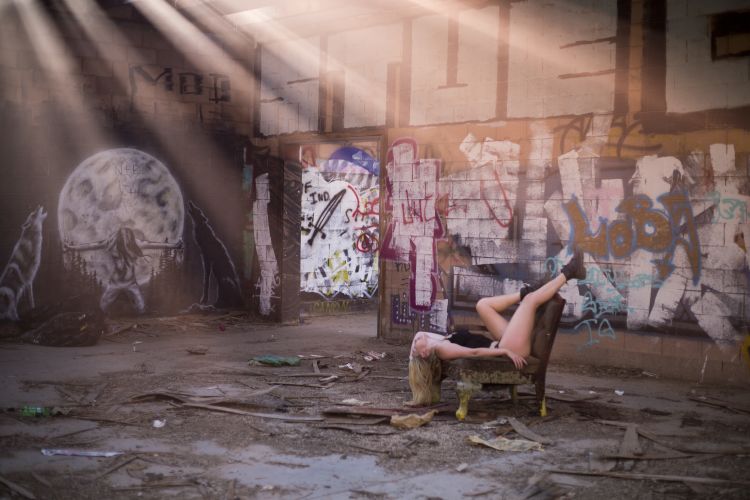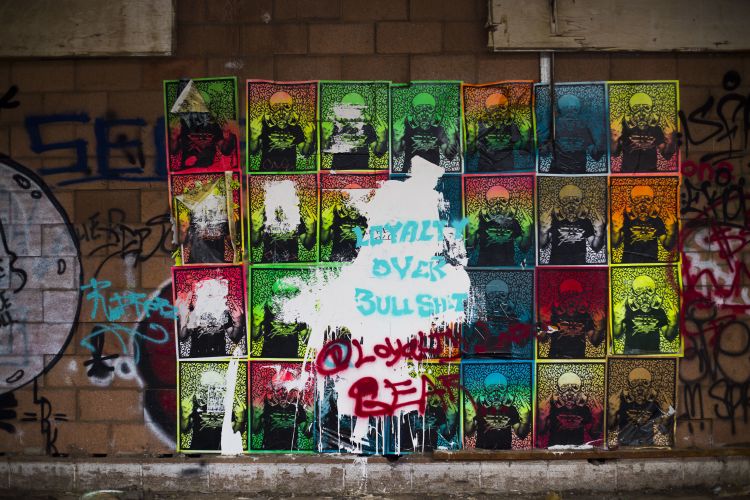ABANDONED
There's an appeal to the places we leave behind, but where do we draw the line between celebrating their strange beauty and respecting the people who lived or still live there?
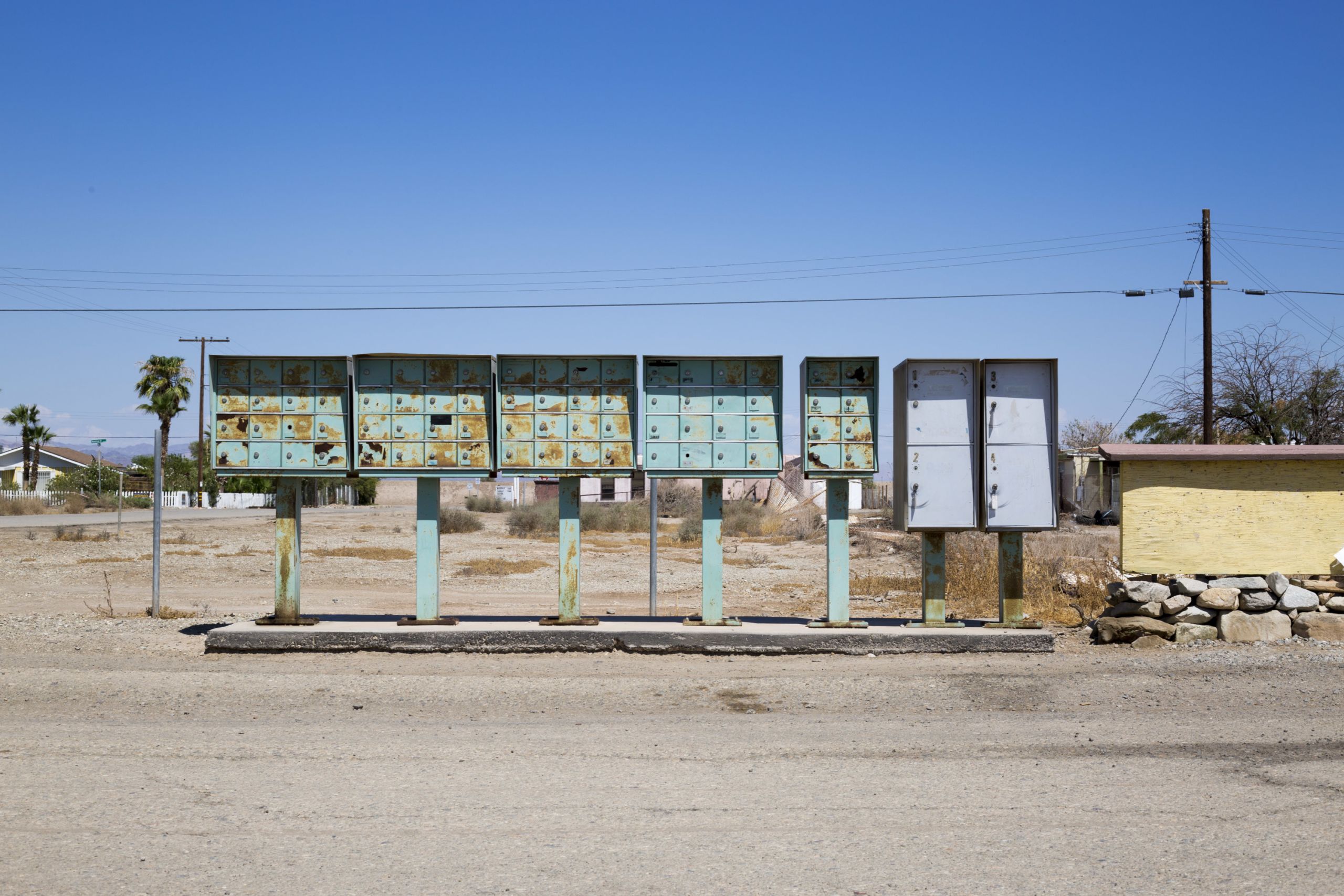
As humans, we are entranced by the idea of abandoned structures and edifices once inhabited by others like us. We live such short lives, industrial blight and the decaying nature of buildings, meant to last multiple lifetimes and stand as remembrance to generations past, shock us and confuse us. We have such an obsession with leaving some kind of physical mark upon our world, we feel empty when we find those marks falling apart at the whimsy of the elements they are exposed to.
This obsession is so fierce that hobbyists have begun to take the voyeurism of such occurrences into their own hands. Urban exploration, otherwise known as ‘urbex’, is the pursuit of exploration of places in an urban (or once urban) environment that are considered ‘off limits’. You can see urban explorers treading carefully over the cracked wooden floors of a church no longer echoing with preachers and choirs of years past, shining torches down the gulches of maintenance and utility tunnels, ducking under rusting fences surrounding a house in a town no longer recorded in maps, scaling the walls of unused and stagnant dams; the list goes on.
The late Jeff Chapman (more popularly known as Ninjalicious), curator of and writer for Infiltration, a zine devoted to urbex and “about going places where you’re not supposed to go,” as their strapline describes, is passionate about the respect towards urban explorers and the careful ‘code’ they follow when conducting their expeditions: “genuine urban explorers never vandalize, steal or damage anything – we don’t even litter… We don’t harm the places we explore. We love the places we explore.” By entering these already-delicate sites individually or in small groups, they show a devotion to the preservation of local environments, in the same spirit as backpackers and hikers (‘take only photos, leave only footprints’).
“Urban explorers strive to actually earn their experiences, by making discoveries that allow them to get in on the secret workings of cities and structures, and to appreciate fantastic, obscure spaces that might otherwise go completely neglected. When you step away from the TV and think about it, humans are naturally curious creatures. We can’t help but want to see the world around us; we’re designed to explore and to play, and these instincts haven’t disappeared just because most of us now live in large cities where parking lots have replaced common areas, malls have replaced city squares and the only public spaces that remain are a few grudgingly conceded parkettes.”
Recently, however, such pursuits have become commercialised, especially in places suffering from deindustrialisation and population loss, causing an erosion of a city’s tax base, increasing the number of abandoned spaces available for the public to explore. In the practice of what’s called “dereliction tourism”, larger tour groups, organised by a tour guide and brought by group transportation(tour bus), are entering these spaces more and more, encouraged by the lack of public services protecting them from trespassing. Kaeleigh Herstad, an anthropology doctoral candidate at Indiana University conducting “an ethnographic investigation of perspectives on and approaches to blight removal and management in Detroit, Michigan,” uses her current home as an example:
“In cities like Detroit, for instance, law enforcement is underfunded and stretched thinly across a large area, and pursuing people for trespassing or scrapping–which are often perceived to be ‘victimless’ crimes–isn’t a high priority. This means that tour guides can take a larger group of people into various sites without having to worry as much about the legal consequences.”
Another consideration to take into account is, because these tours are operated illegally and in an unregulated fashion, many of the tour operators never report earnings and thus never pay taxes, robbing these areas of monetary aid that they are already desperate for and that other tourism-based businesses would offer. It’s a self-fulfilling cycle, encouraging what urban sociologist Alice Mah calls an ‘aestheticisation of industrial blight.’
“Both dereliction tourism and ethnographic research in areas of industrial decline share ethical problems, in that they risk voyeurism, romanticization, and the reproduction of stigmatization. At the same time, they both also offer the potential for alternative ethical possibilities through the insights that can be revealed through being there as a witness in different people and places… The negotiation of complex, blurred roles in the research field as an outsider, visitor, tourist, activist, ethnographer, activist, and human being require careful reflection in relation to intrinsic ethical issues.”
What follows here is a study on the abandoned places that I have agreed to step foot in and document, for better or for worse. In looking back, I have realised my wrongdoings and hope that I can move forward from them by learning more about these locations, their histories and changing cultures, and by treating them with more care if I do choose to return.
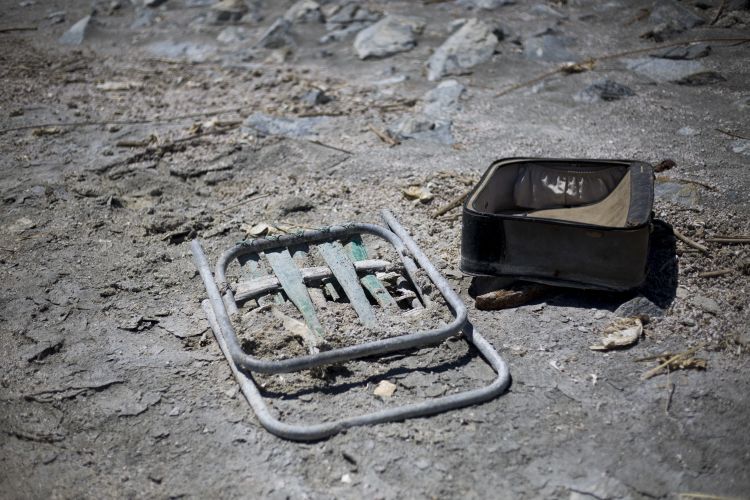
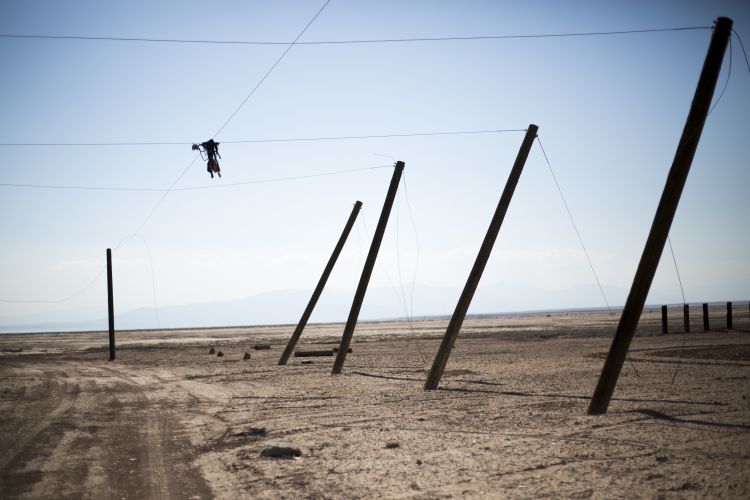
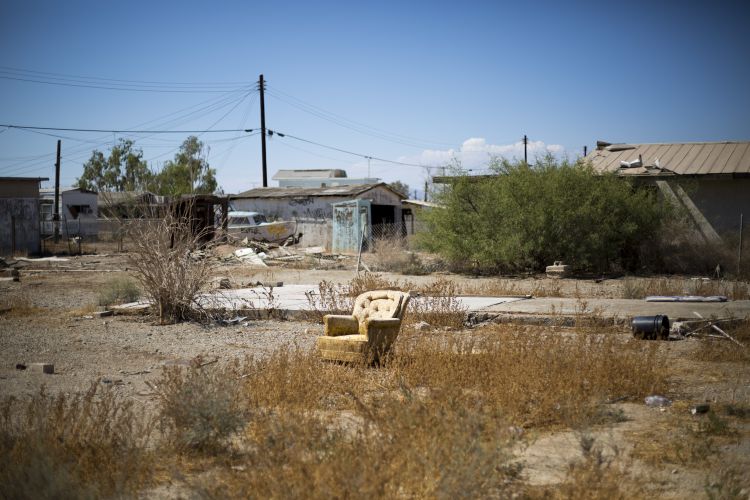
BOMBAY BEACH
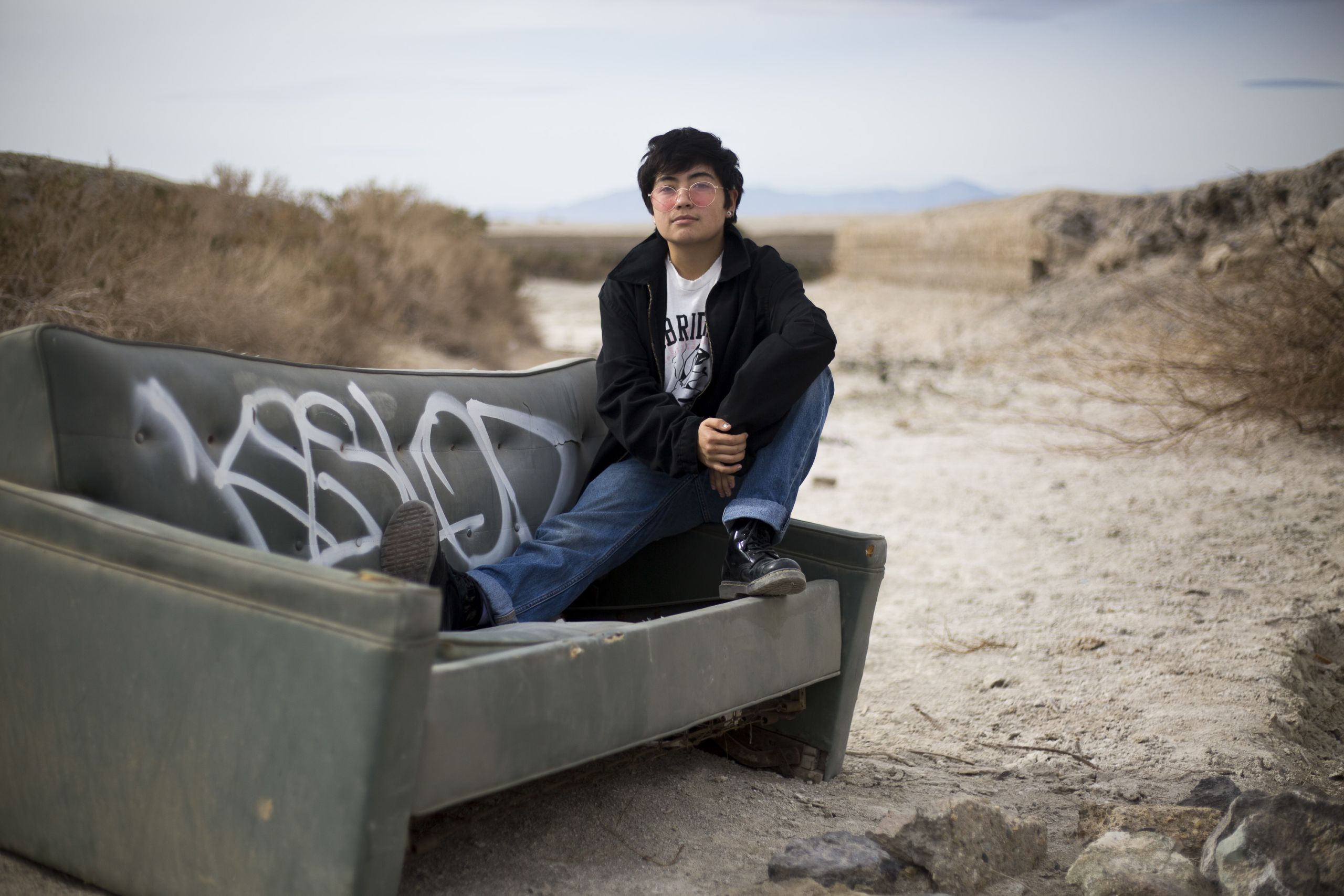
These are images taken in an abandoned home in the heart of Bombay Beach.
The Salton Sea did not always exist.
Shifting over thousands of years, the Colorado River would temperamentally fill the Imperial Valley, creating a freshwater or saline lake, or an empty basin, depending on the river’s flows and inflow versus evaporation. The lake’s current existence was accidentally caused by engineers of the CaliforniaDevelopment Company in 1905 when canals built to increase water flow into the area for farming irrigation. The increased flow into the Salton Basin filled the lake for two years, and there it now remains.
The lake’s salinity currently rests between that of the Pacific Ocean and the Great Salt Lake at 56 grams per litre, but increases by 3% each year. Because of this, the shores are littered with the corpses of the fish that cannot survive such high levels of salt, also joined by those who fell fate to the rising algal blooms and elevated bacterial levels resulting from pollution by fertilizer runoff. The air hangs heavy with a mixture of smells: dryness from the dust clouds and a tinge of salt rising from crusty sands left by receding salty waters as the lake shrinks, rotting meat from animals falling victim to the lake’s deadliness. Such a loss of an ecosystem means 400 species left high and dry (no pun intended), the most concerning of which is the threatened population of the American white pelican, 30% of whose remaining numbers is supported here.
Bombay Beach – not even a town, but considered a census-designated place (CDP) by the United States – is the lowest community in America, resting at 223 feet below sea level, and dropped from a population of 366 in 2000 to just 295in 2010. A few decades the Salton Sea’s creation, conveniently just on the banks of Bombay Beach, it became one of a string of beach resorts that popped up there in the mid-twentieth century, advertising an idyllic getaway filled with water skiing, swimming and sunbathing. Despite the only drinking hole to still exist being the Ski Inn (save for the local American Legion, hurrah), the only visitors who arrive come to document its dereliction.
In 2011, Bombay Beach gained widespread attention when a documentary, Bombay Beach (2011) directed by Alma Har’el, won “Best Documentary Feature” at the same year’s Tribeca Film Festival. Following three protagonists and their families as they traverse their lives in a beach resort gone semi-ghost town, it captures “the American Dream on the edge of a desert sea" (Terry Gilliam).
Cedric “CeeJay” Thompson, an African-American high school student and aspiring NFL football player, fled to Bombay Beach to escape the same fate as his cousin’s, a gang-related shooting in South Central Los Angeles; Red is an eighty-something former oil worker estranged from his family whose main source of income is bootlegging cigarettes bought from a nearby Indian reservation fora quarter apiece; Benny Parrish, a grade schooler who was separated from his parents after they were arrested and jailed on suspicion of terrorism thanks to his father’s stockpile of munitions in the backyard, is carted from doctor to doctor by his now-reunited mother after he shows symptoms of bipolar disorder.
Sweltering under a sun that causes temperatures to swell to 50 degrees Celsius during the summertime, the lyrical and ultra-personal insight into these three characters’ everyday lives makes one exploring the area wonder: will we pass them? Will we recognise them if we see them? What do they think of us, gawking on what they call their home, reluctant or no? They have inner lives as well, and they must experience the same things in a way, no matter how far removed they seem to be from our own reality. Stepping over broken glass, entering an abandoned house gingerly, feeling as though we are trespassing someone’s past life years or decades ago, how shall we act once we cross this threshold, literally and figuratively?
The following images were taken at what was signed as the 'Bombay Beach Drive-In'.
Complete with a blank screen for films to be projected and dozens of gutted and rusting cars facing it, we posed with a variety of differently-styled outfits, either to fit with the aesthetic of some of the cars' years, or to contrast with the industrial style of the lot.



NILAND
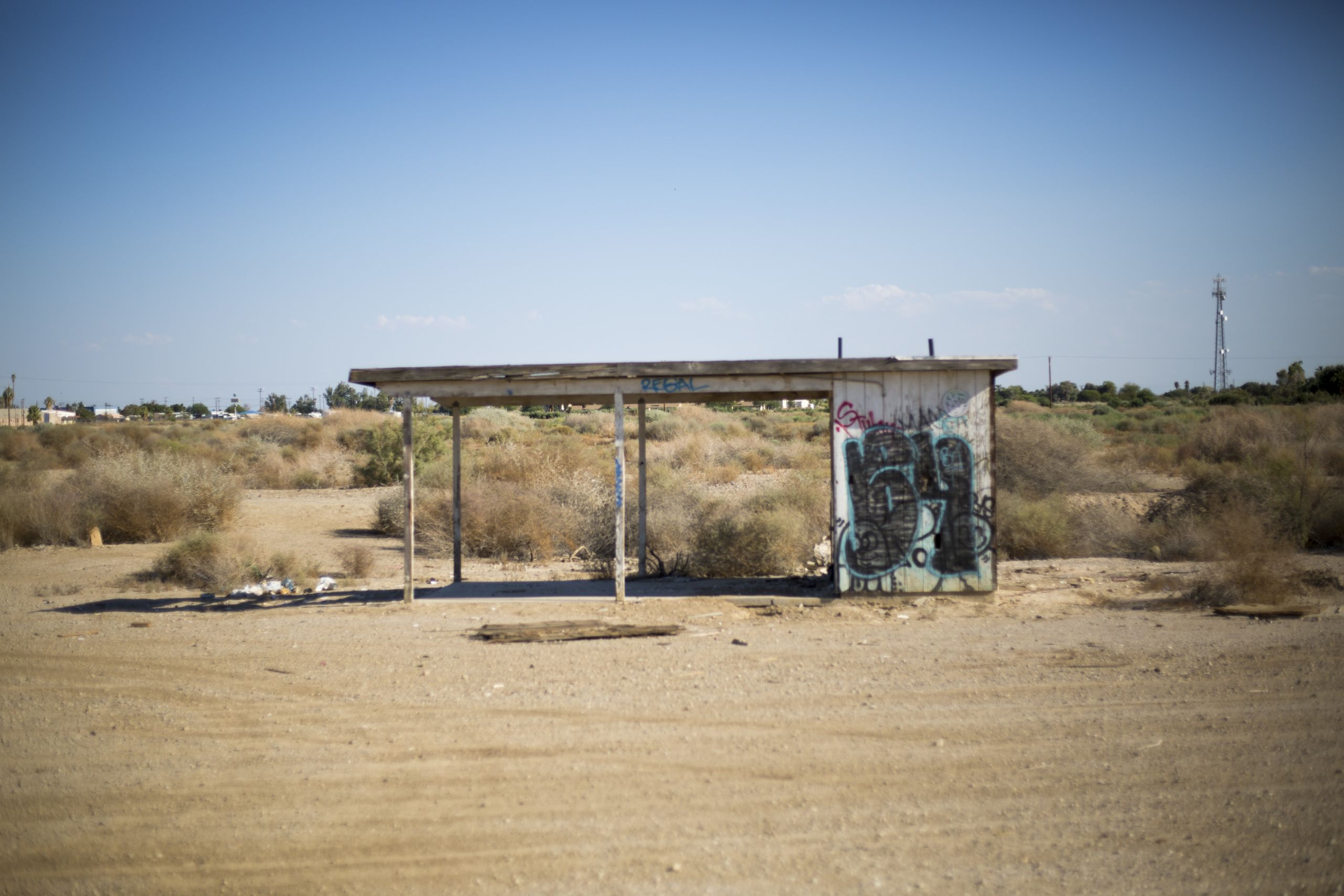
Niland, CA, is where we stop for gas on the way to Bombay Beach. 20 miles down Highway111, it’s the closest petrol station to many who find their homes here. Similar to its neighbour, its population is steadily decreasing over the decades, suffering from a loss of business as more and more people move closer to the cities. Greater Niland is also home to East Jesus and Salvation Mountain, art exhibitions decades in the making and the greatest tourist attraction (see its geo-tag on Instagram and you’re bound to find hundreds upon thousands of phone images) in the area.
Slab City is also nearby, one of the most famous decommissioned and uncontrolled pieces of land in the United States It has no official electricity, running water, sewers, toilets or trash pickup services with Niland four miles away being the closest body of civilisation, law enforcement and basic shopping resources, and so is inevitably known by inhabitants and Vice as a de facto anarchist archipelago. Recently, more bands have been coming to play The Range, an open-air nightclub that also host the Slab’s prom, because many residents who live there have never actually been able to attend a prom.
We drove through Slab City on our first trip to Niland, but felt even more uneasy about stopping for photographs here.
Living in makeshift structures (one constructed, mountainous and pyramidal, entirely out of plywood) or resting in RVs and trailers, these were people's homes. Somehow, it felt all the more uncomfortable to step out and invade this privacy. I'm still not sure if it was because of the utter silence The Slabs had at that time, or if, unlike Bombay Beach with proper homes that look not unlike the ones in my own neighbourhood, the sight was so alien that we were starstruck in a different sense. (Not to say the people were alien, of course; they are people.)
Travel a few minutes down the highway towards Bombay Beach, turn left onto a dirt turnpike, and you arrive at what looks to be an abandoned factory building.Squat to the ground, with one large room on the far side and a slurry of increasingly smaller rooms as you move through it, covered in graffiti art and littered with a variety of different discarded items which now include some of my smoke bombs used in this photoshoot, it has no doubt housed many in the unknown amount of time it has stood there, alone.
It is here that many have balanced on the thin line between urban exploration and dereliction tourism. Does the art on these walls constitute vandalism? With a skip slowly filling to the brim with bits of moth-eaten clothing, broken glass no one’s cared enough to sweep away, at one point a circle of ritualistically-placed fire extinguishers at the centre of the largest room, with only the bats at dusk to see the unnatural growing pile of litter, does that constitute disrespecting the space?
I think of the spent smoke bomb capsules, spraying coloured paint in streaks across the concrete floor, and I think of the empty beer bottles we felt too tired to gather at the end of the twelve-hour day. Seeing others around, knowing they won’t be leaving unless someone arrives and gathers them instead for whatever reason, do they add to this space or do they take away from it?The art surely adds to it; arriving after six months had past and seeing something new brings that excitement back, even if the setting is almost exactly the same. Perhaps it is up to the explorer to decide where the line is crossed or not.
These images and the images following were taking in this building.
